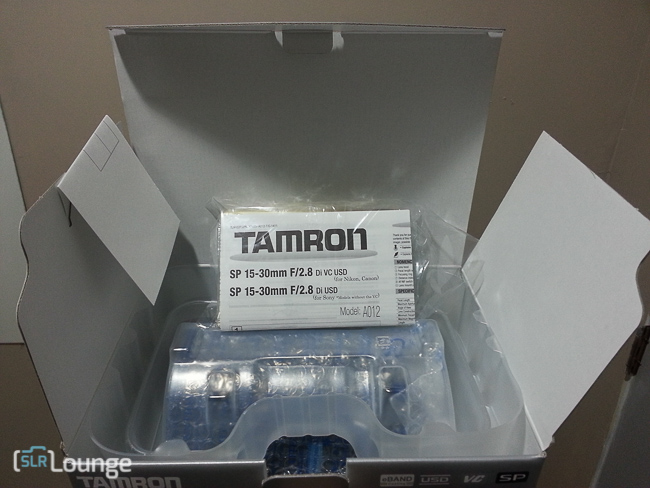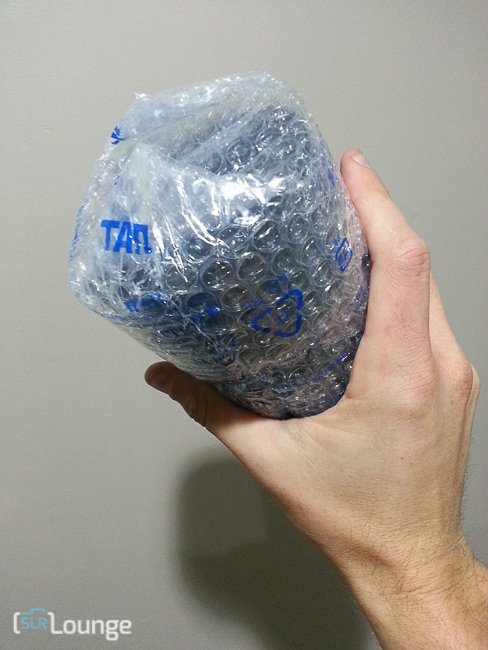
This lens is a monster! If size and weight are any indicator (and yet if price is not), then we have a new champion of ultra-wide f/2.8 full-frame lenses: The Tamron SP 15-30mm f/2.8 Di VC USD.
Specs:
Price: $1200 (from B&H)
Angle of view: 110°-71°
Weight: 1,100 G / 38.8 oz / 2.43 lbs
Dimensions: 3.87″x5.71″
Glass:
XMG & LD Glass Elements
Fluorine coating
eBAND and BBAR coating
Autofocus: Ultrasonic Silent Drive AF
Aperture: 9-blade rounded diaphragm

There are all sorts of opinions out there on the various key features of the lens that I am about to review. It’s a third-party lens. It’s partly made of plastic. It’s got stabilization, even though it’s an ultra-wide f/2.8 lens. Oh, and it weighs almost 2.5 lbs. That’s a whopping 1.1 KG, almost as much as a 70-200mm f/2.8.
Ironically, while many armchair spectators on the internet would pick one of those first items as a reason for trash-talking, none of them bother me. The one thing standing between me and purchasing this lens is that last fact: it feels like you’re attaching a brick to the front of your camera.
That is usually a very good indicator of quality, though, as I already mentioned. Therefore, I will approach my review of the Tamron 15-30mm f/2.8 with a very open mind. We’ll put it through its paces at weddings, portrait sessions, and of course my favorite subject: astro-landscape photography.
Right now as I type this, I’m about to drive all night to get to Yosemite National Park before sunrise, to begin my review! In the meantime, I’ve written down my initial impressions for you to enjoy. Please feel free to comment below if you have any specific questions! Also I won’t leave my astro-landscape friends hanging: scroll down for a proper star / coma 100% crop test!
[RELATED: Tokina 11-20mm f/2.8 | The best ultra-wide lens available for crop sensors!]
Initial Thoughts On The Tamron 15-30mm f/2.8 Di VC USD
When I open the box, I find that Tamron is using some pretty nice packaging similar to the various Nikon, Tokina, and Rokinon lenses I’ve unboxed recently; well-fitted thin plastic shells instead of environmentally un-friendly styrofoam or excessive amounts of cardboard, or of course, Canon’s latest genius idea for their more affordable lenses, a 2-ply bubble wrap pouch.

Then again, Sigma EX / ART lenses still take this cake, since they ship in the nicest padded cases I’ve ever used. They even beat the Canon / Nikon 70-200 pouches that come with those lenses!
This Tamron does not include any sort of case, or leather pouch, unfortunately.
Inside the plastic shell there is, in fact, some bubble wrap around the lens itself. And yeah, it’s BIG. Just for kicks I’ll add another picture, the Rokinon 12mm f/2.0 on the Sony A6000. Apples and oranges indeed.


In other words, the Tamron 15-30mm f/2.8 is a Ford Excursion of lenses.

The Tamron 15-30’s packaging is impressive down to the final details: the focus window has a plastic protector on it, and the zoom ring has a couple pieces of blue tape keeping the lens from “racking” during shipping, I suppose.
Speaking of zooming, both the zoom and focus rings feel good. The zoom ring has that “new lens” stiffness to it though, and since it is enormous, it does require quite the grab-and-crank motion to go all the way from 15mm to 30mm. My wrist-elbow-shoulder action feels more like I’m tightening the lug nuts on a tire, or opening a jar of pickles (pre-loosened?) than racking a lens just ~30 degrees.
I suspect however that the “new zoom” feel will turn into a fantastic easy operation within just a few weeks of use, so stay tuned for that report.
The focus ring feels amazing right off the bat and precise focus is rather easy. Not as long-throw as a Rokinon 14mm f/2.8, but noticeably easier than the Nikon 14-24mm f/2.8. This is especially nice for focusing on stars or other pin-point objects.
The AF and stabilization switches click nicely and are designed so that they don’t seem like they could get easily bumped.
But like I said earlier, there’s a lot of plastic involved. For me, this has never been a deal-breaker. What really matters is how a lens is designed, not what it’s made of. I have completely destroyed a couple metal lenses in my day, and I have a few plastic lenses that refuse to die. The jury will remain out on this lens until enough folks have had a chance to seriously abuse it for 6-12 months.

Did I mention how big it is? It’s more chunky than one of the chunkiest lenses ever, the original mk1 Canon 24-70mm f/2.8 L.
Tamron 15-30mm f/2.8 Autofocus and Stabilization
Autofocus has always been a struggle for the third party lens makers. Canon and Nikon have had their USM and SWM autofocus motors for many generations now; they’re roughly on par with each other and they’re pretty much the industry standard.
Sigma has had their HSM autofocus for a while too, but it has often had issues with front-focus or back-focus, or accuracy across the board. Lately, Sigma’s Art lenses have still been a mixed bag with regard to quality control, but if you do get a perfectly focusing copy, you will enjoy snappy, reliable, and silent AF.
Tamron and Tokina have only recently developed their own competing autofocus motors, so the jury is still out in that regard. So far, the Tamron 15-30mm seems to be snappy, accurate.
The VC (Vibration Control) also seems to work very well, but it does make a faint “ka-chunk” noise whenever you first activate it. Standing, at 15mm, I can hand-hold at 1/2 sec. shutter speeds if I concentrate and use good technique. If I sit down and brace myself then even 1 sec. exposures are sometimes tack-sharp, but no more than 30-40% of the time.
Additional Remarks
I still need to mention a few more things. The focus ring is at the back of the lens while the zoom ring is at the front, which some people complain about, but I personally prefer. Also, the zoom and focus rings may rotate the opposite way from whatever you’re used to, depending on if you shoot Nikon or Canon, or Sigma or Tokina, etc. Again, something that never really bothers me for more than a few minutes when I first buy a lens.

Last, but not least, here’s something you don’t always see: At 30mm, the rear element retracts so far that it reveals a whole donut of electronic circuitry, and the rest of the lens’ innards. This can’t be good news for anyone who needs to change lenses in the rain, or in a sandstorm. This could also be bad news for dust ingestion even for casual photographers. We’ll wait and see.
Another oddity: the front of the lens is basically a hood inside a hood. The outer half of the hood is fixed, but the front element also has a thinner hood that is the exact same shape as the outer hood. I’ll have to demonstrate this in the video review. It seems like a good idea for keeping rain or dust out, but a grain of sand could be serious trouble.
[Rewind: How To De-frost And Save a Frozen Camera | Cold Weather Photo Tips]
Alternatives to the Tamron 15-30mm f/2.8 VC
What lenses are this new Tamron’s most direct competition?
Primarily, of course, there is the Nikon 14-24mm f/2.8, which is the closest lens if you consider sharpness and size / weight / cost. The Nikon is probably going to be about equally sharp, but more expensive. It may also prove to be more robustly built and well-sealed.
The Tokina 16-28mm f/2.8 is also a good competitor, but opts for a 16mm wide end instead of 14mm or 15mm. It is also similarly hefty, but about half the price of the Tamron. The Tokina is sharp, but probably slightly less sharp than the Tamron. Despite being heavy and having numerous metal internals, it is known to be susceptible to de-centering if used heavily (Meaning, bad for astro, but fine for photojournalism and action sports).
The Canon 16-35mm f/2.8 L is almost as expensive as the Nikon 14-24, and yet the worst of the pack by a noticeable margin when it comes to sharpness. I’d only buy the Canon if weather sealing and metal construction are ten times more important than sharpness or stabilization.
What about the Canon 11-24mm f/4? Well, just about the only thing this lens has in common with the Tamron 15-30 is that it’s new. Other than that, hitting 11mm and costing $3,000 puts it in a completely different ball-park from the $1200 Tamron 15-30. If you have $3K to spend, though, and shoot mostly stopped down, then the 11-24mm f/4 is obviously the only show in town.
Tamron 15-30mm f/2.8 Center & Corner Sample Image Crops
Since our full review will be out very soon, I’ll leave you with just these two 100% crops, and a shot from a quick trip to the beach. So far, so good!
 Normally in light-polluted cities, those fainter stars just don’t show up, but it seems that the Tamron 15-30’s wide-open sharpness and contrast are really helping to reveal them!
Normally in light-polluted cities, those fainter stars just don’t show up, but it seems that the Tamron 15-30’s wide-open sharpness and contrast are really helping to reveal them!
 Coma is weird looking, but rather small considering this is a 24 megapixel image. In a 1080p timelapse video, this would probably be negligible, though maybe not in a 4K timelapse.
Coma is weird looking, but rather small considering this is a 24 megapixel image. In a 1080p timelapse video, this would probably be negligible, though maybe not in a 4K timelapse.

Tamron 15-30mm f/2.8, Nikon D750, hand-held
1/40 sec @ f/14 & ISO 100
All in all, I think we’ve got a pretty impressive lens on our hands, and I can’t wait to finish reviewing it!
Take care and happy clicking,
=Matt=
Matthew Saville
Follow his wilderness nightscape adventures on Instagram: instagram.com/astrolandscapes




Get Connected!